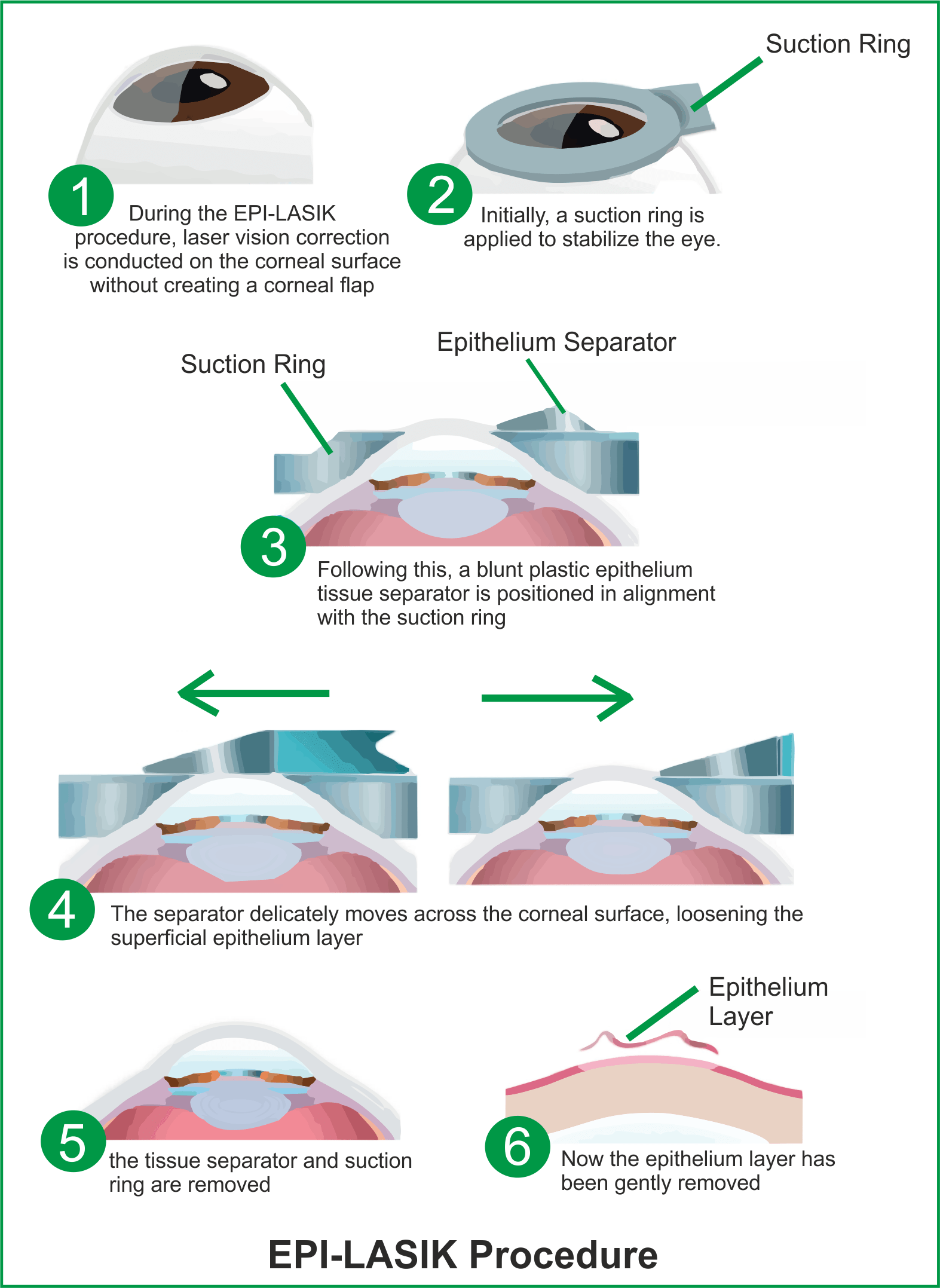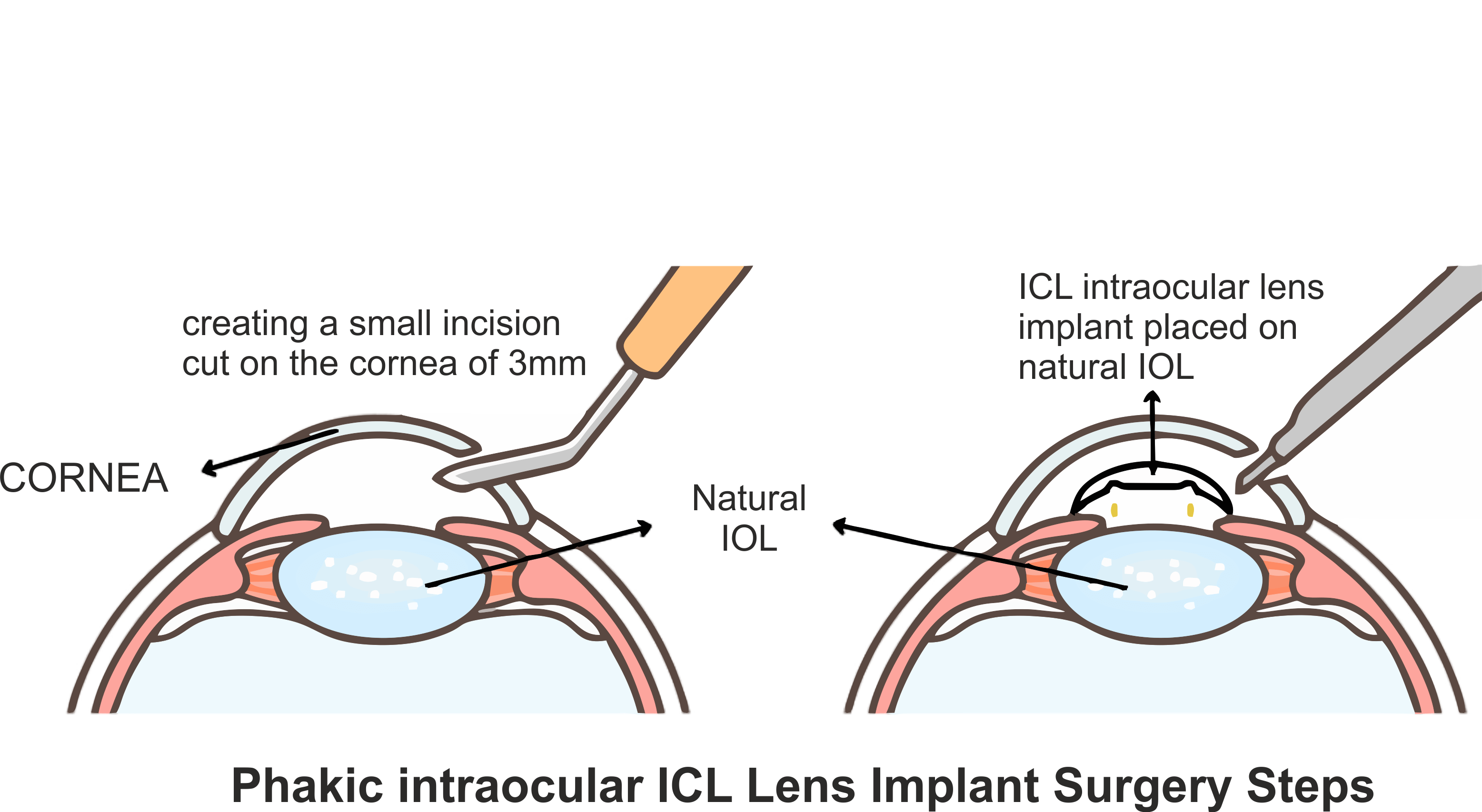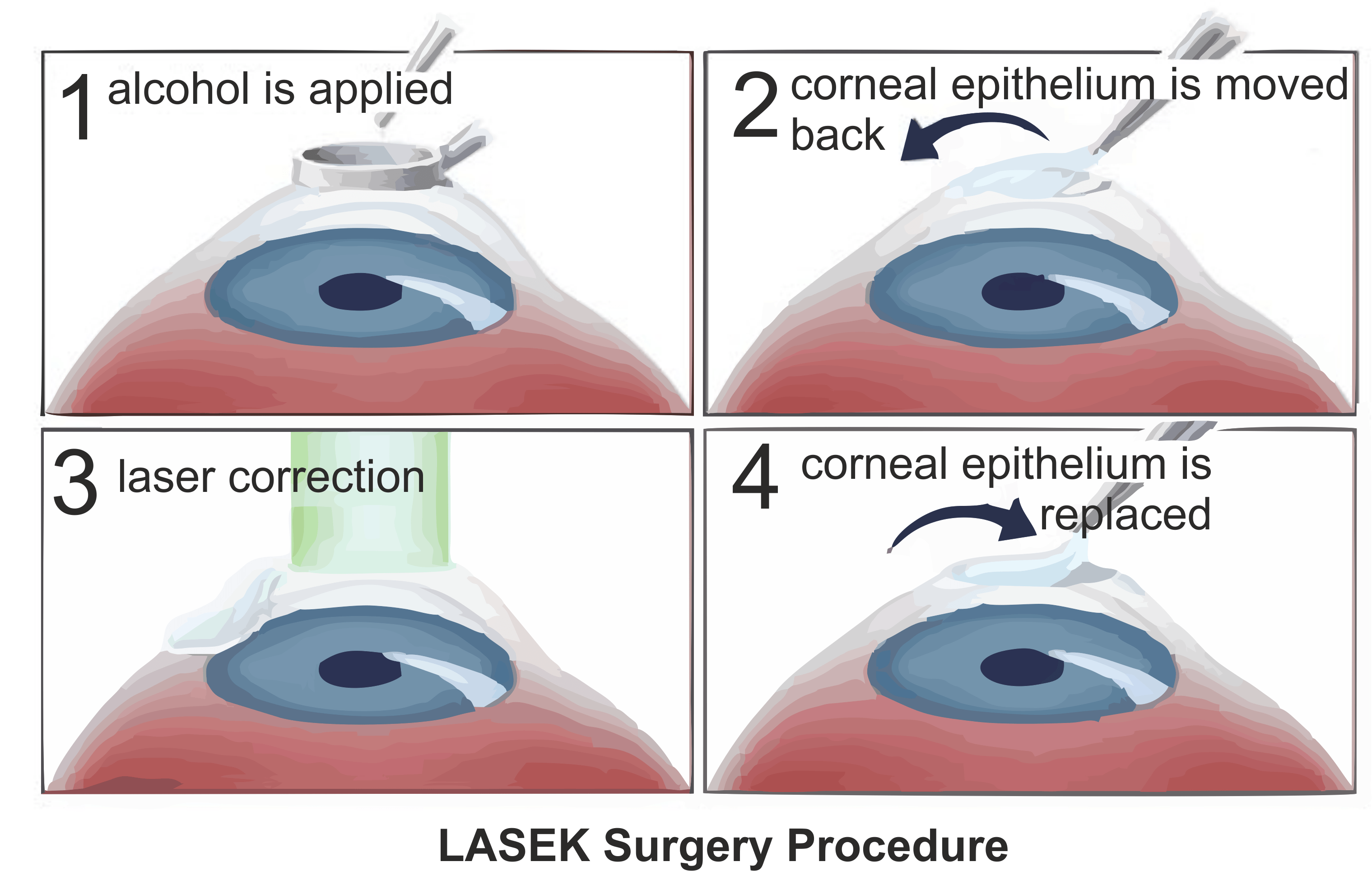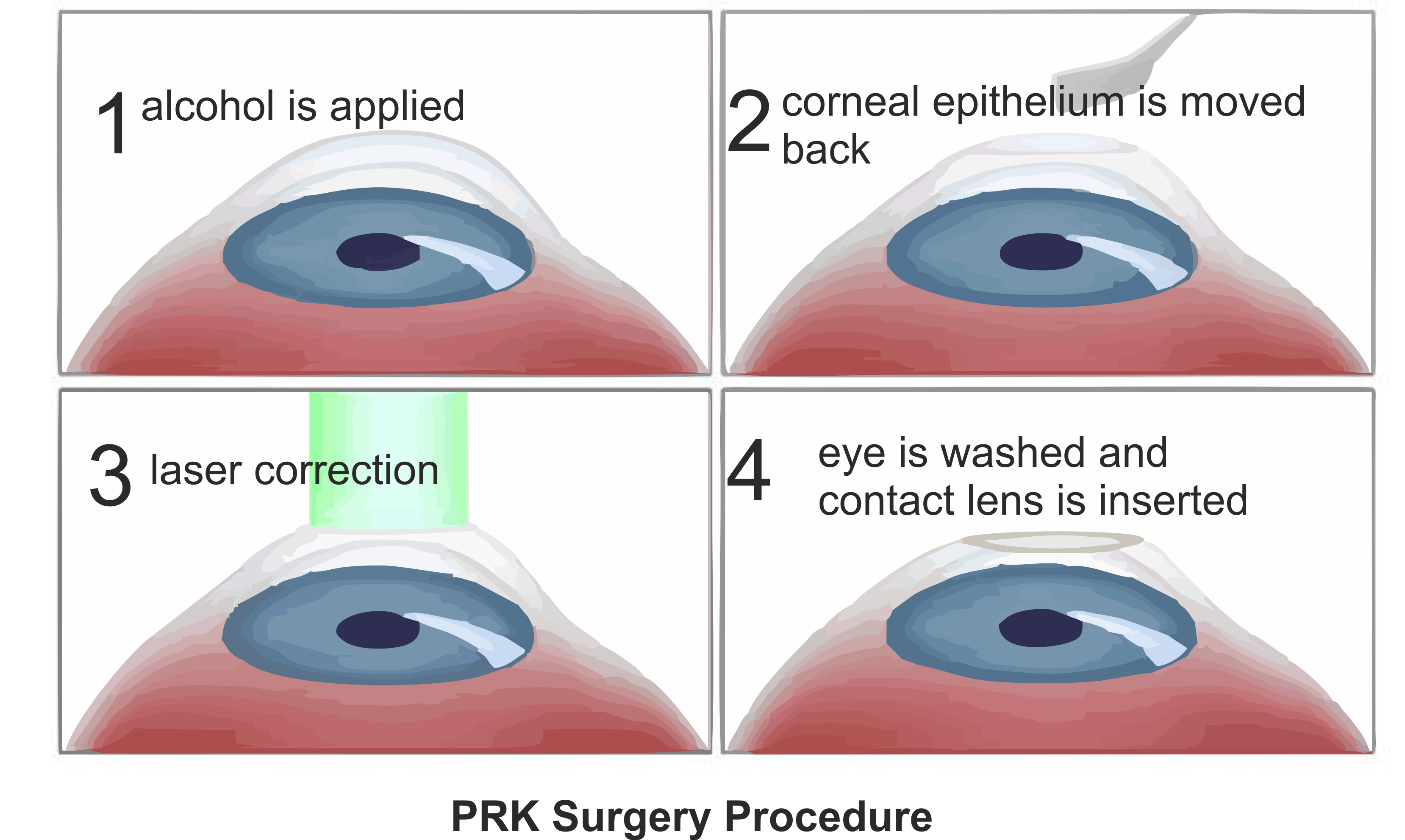vision for the future
Ramole Eye Hospital in Nashik is NABH Accredited Advanced Eye Care Centre in Nashik with all facilities like Advance PHACO Micro Surgery (MICS), Toric Lens Implant, New Refractive Tricofocal Implant, Contoura Lasik Vision Surgery, Advanced Surface Treatment, Phakic Implant (Phakic Lens/ICL), Keratoconus Treatment (C3R) etc. with Specialised & Customized Facilities available for All Age Groups including Pediatric to Senior Citizens. We provide all types of Mediclaim, ESIC, Facilities too.
We have the following types of Refractive surgeries:
EPI LASIK
EPI Lasik surgery is the best option for those with thinner corneas.
PHAKIC IOL
PHAKIC IOL is the best option for those with high refractive errors.
LASEK
LASEK is the best option for those who are not suitable for LASIK and PRK Surgery.
PRK
PRK is a suitable option for individuals seeking an alternative to glasses or contact lenses.
EPI LASIK SURGERY
In the realm of refractive eye surgeries, EPI-LASIK, or Epithelial Laser In Situ Keratomileusis, stands out as an innovative variation designed to optimize the corneal flap creation process.
NOTE:
EPI-LASIK is often favored for individuals who might not be ideal candidates for traditional LASIK, particularly those with thinner corneas. Recognized as a surface ablation procedure, EPI-LASIK mitigates the need for a full-thickness flap, further minimizing associated risks.
Here’s an overview of how the EPI LASIK procedure works:

1) Corneal Epithelium Preparation:
Unlike LASIK, where a corneal flap is created, EPI-LASIK begins by preserving the corneal epithelium, the outermost layer of the cornea. Instead of cutting a flap, Dr. Ramole gently loosens the corneal epithelium using a specialized blunt separator or a mild alcohol solution.
2) Laser Reshaping:
Following the gentle separation of the epithelium, an excimer laser comes into play to reshape the underlying corneal tissue meticulously. This precise laser sculpting corrects refractive errors, aligning with each patient’s unique prescription.
3) Epithelial Flap Repositioning:
Upon completion of corneal reshaping, the loosened epithelial flap is delicately repositioned over the treated area. To aid the healing process, Dr. Ramole may utilize a soft contact lens as a protective bandage over the cornea.
4) Healing and Recovery:
The repositioned epithelial flap acts as a natural bandage, fostering expedited healing. As the cornea heals, the epithelial cells naturally adhere to the underlying tissue.
At Ramole Eye Hospital in Nashik, Dr. Abhijeet Ramole, a distinguished Phaco and LASIK Surgeon, specializes in this advanced procedure, offering patients a meticulous and tailored approach to vision correction.
PHAKIC IOL (INTRAOCULAR LENSES) SURGERY
Phakic intraocular lens (IOL) surgery is a procedure designed to correct refractive errors, such as myopia (nearsightedness), hyperopia (farsightedness), and astigmatism, by implanting a lens inside the eye.
NOTE:
Patients with thin corneas, which may make them unsuitable for corneal procedures like LASIK or PRK, might find phakic IOL surgery more suitable. Phakic IOL surgery is specifically designed for patients who have not developed significant cataracts. If cataracts are present, other surgical options, like cataract surgery with IOL implantation, may be considered.
Here’s an overview of how the PHAKIC IOL procedure works:

1) Preoperative Evaluation:
The process begins with a comprehensive eye examination to assess the health of the eyes and determine the most suitable type and power of the phakic IOL.
2) Anesthesia:
Before the surgery, the eye is numbed using local anesthesia to ensure the patient’s comfort.
3) Incision or Corneal Flap Creation (Optional):
In some cases, a small incision may be made in the cornea, or a corneal flap may be created to facilitate the insertion of the phakic IOL.
4) Phakic IOL Implantation:
The phakic IOL is inserted into the eye, typically in front of the natural lens. The specific technique may vary based on the type of phakic IOL used.
5) Placement and Adjustment:
The surgeon ensures that the phakic IOL is correctly positioned within the eye. Adjustments are made as needed to optimize visual acuity.
6) Closing Incisions (If Made):
If an incision or corneal flap was created, it is closed with precision to promote proper healing.
7) Postoperative Care:
After the procedure, patients are provided with postoperative care instructions, including the use of prescribed medications and follow-up appointments.
8) Recovery:
Patients may experience a short recovery period, during which they are advised to take it easy and avoid strenuous activities. Visual improvement is often noticeable shortly after the surgery.
9) Follow-up Visits:
Regular follow-up visits are scheduled to monitor the healing process and ensure the ongoing health of the eyes.
LASEK SURGERY
LASEK (Laser Epithelial Keratomileusis) is a refractive eye surgery that combines aspects of both LASIK and PRK procedures.
NOTE:
LASEK is suitable for individuals with thinner corneas or those who may not be good candidates for traditional LASIK. As with any surgical procedure, the decision to undergo LASEK should be made in consultation with an eye care professional.
Here’s an overview of the LASEK procedure:

1) Preoperative Examination:
Before the surgery, a comprehensive eye examination is conducted to assess the patient’s overall eye health and determine their suitability for LASEK.
2) Anesthetic Eye Drops:
The surgeon starts by applying anesthetic eye drops to numb the eye and ensure the patient’s comfort throughout the procedure.
3) Epithelial Flap Creation:
Instead of creating a corneal flap as in LASIK, LASEK involves creating an epithelial flap. The surgeon loosens the outer layer of the cornea, called the epithelium, using a special alcohol solution.
4) Epithelial Flap Repositioning:
Once the epithelial flap is created, it is gently lifted and moved aside to expose the underlying corneal tissue.
5) Laser Reshaping:
The excimer laser is then used to precisely reshape the corneal tissue based on the patient’s refractive error. This reshaping is done to correct nearsightedness, farsightedness, or astigmatism.
6) Epithelial Flap Replacement:
After the laser reshaping is complete, the epithelial flap is repositioned onto the treated area. No stitches are typically required as the flap begins to heal on its own.
7) Protective Contact Lens:
A soft contact lens is placed on the eye to protect the healing epithelial flap and enhance patient comfort during the initial recovery period.
8) Postoperative Care:
Patients are provided with instructions for postoperative care, which may include using prescribed eye drops, avoiding certain activities, and attending follow-up appointments.
9) Recovery Time:
The initial healing period for LASEK is generally longer than LASIK, and patients may experience some discomfort during the first few days.
10) Visual Improvement:
Vision improvement occurs gradually as the eye heals, with final results typically achieved within a few weeks.
11) Follow-Up Appointments:
Regular follow-up appointments are scheduled to monitor the healing process and ensure optimal visual outcomes.
PRK SURGERY
PRK is a popular refractive surgery option for those who may not be suitable candidates for LASIK. It provides effective and lasting vision correction, helping individuals achieve clearer vision without the need for glasses or contact lenses.
Here’s an overview of the PRK procedure:

1) Anesthetic Eye Drops:
Before the surgery, the patient’s eye is numbed using local anesthetic eye drops to ensure a pain-free experience.
2) Epithelial Removal:
Unlike LASIK, PRK involves removing the thin outer layer of the cornea, called the epithelium. This can be done using an alcohol solution or a specialized brush.
3) Laser Reshaping:
The excimer laser is then used to precisely reshape the cornea based on the patient’s refractive error.
The laser ablates microscopic amounts of corneal tissue, altering its curvature to correct nearsightedness, farsightedness, or astigmatism.
4) Monitoring:
During the laser application, eye-tracking technology ensures accuracy by adjusting for any eye movements.
5) Bandage Contact Lens Placement:
After the laser treatment, a bandage contact lens is placed on the cornea to protect it during the initial healing phase.
6) Post-Operative Care:
Patients are given specific instructions for post-operative care, including using prescribed eye drops to aid healing and prevent infection.
7) Healing Process:
Over the next few days and weeks, the epithelium regenerates, and the cornea gradually stabilizes.
8) Follow-Up Visits:
Patients attend follow-up appointments to monitor progress and address any concerns during the healing process.
9) Visual Improvement:
Visual improvement occurs as the cornea heals and adjusts to its new shape.
PRK is a popular refractive surgery option for those who may not be suitable candidates for LASIK. It provides effective and lasting vision correction, helping individuals achieve clearer vision without the need for glasses or contact lenses.
